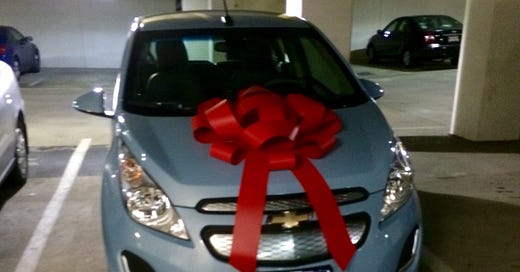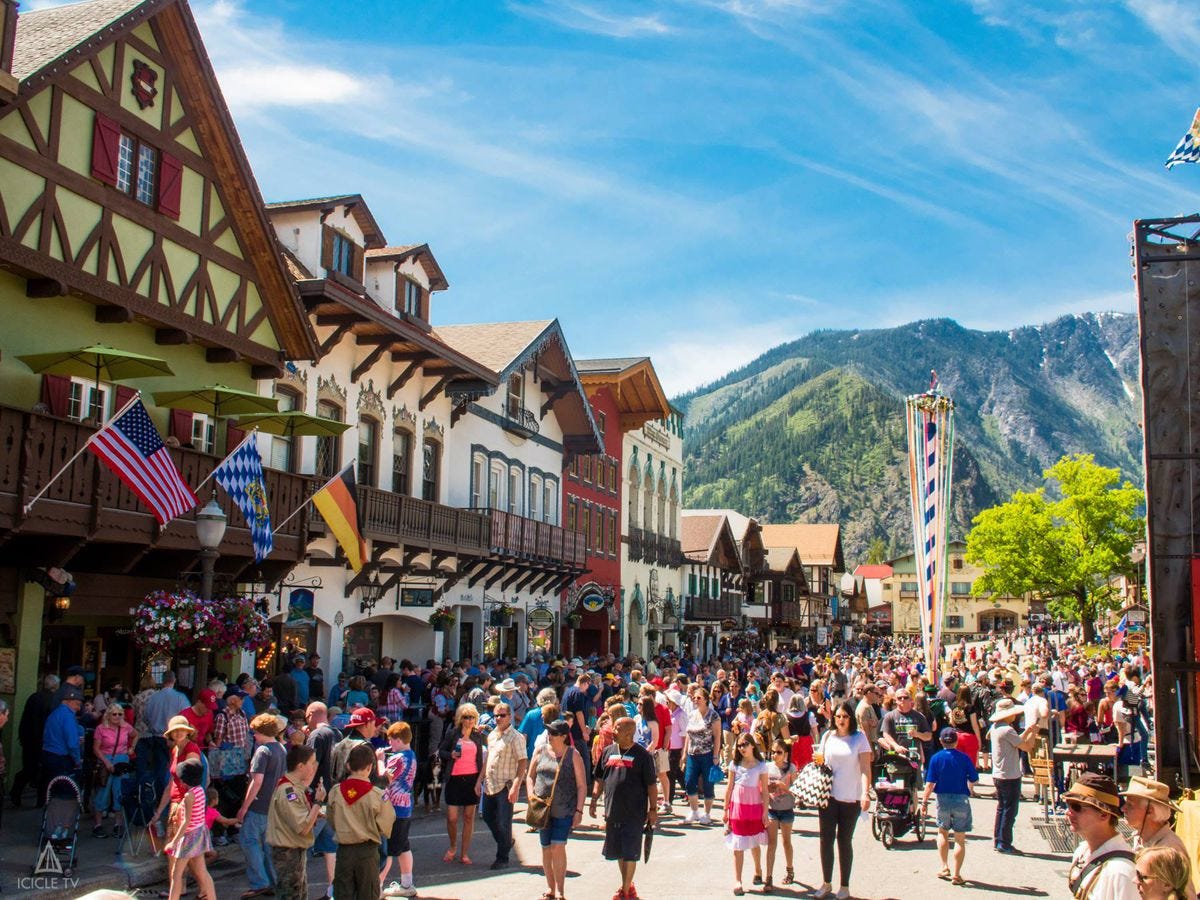Electric vehicles (EV) are relatively commonplace now. There are still parts of North America, anyway, that don’t have any EVs. But there are EV chargers even in some of the most remote locations. That wasn’t always the case. My partner, Kate, and I were early adopters of EVs. We decided that we could make a big impact on reducing pollution by choosing to buy a vehicle that didn’t emit any. We also lived in a part of the country that got most of its electricity from low or no carbon sources (according to our electric bill). We were excited and petrified all at the same time. Our first all-electric car was the 2014 Chevrolet Spark EV. I bought it for Kate as a Christmas gift. And yes, I did put a gigantic bow on it.
That car had an EPA rated range of 82 miles. That’s great for a city runabout but that was about all you could do with it. Or was it? Kate and I were early adopters and quickly became EV-angelists, promoting the technology and the attributes of electric motoring. Something we did a lot in those early days was charge up everywhere we could, whether we needed to or not, to send a demand signal that public charging was viable.
For technical information:
Level 1 (L1) charging = 110v household plug (3 - 4 miles of range per hour of charge)
Level 2 (L2) charging = 240v RV or Dryer plug (10 - 50 miles of range per hour of charge)
Level 3 (DC Fast Charge) = 50 kWH - 300 kWH (200 - 400 miles of range per hour of charge)
To that end, one day we decided to start taking regional road trips around the Pacific Northwest (PNW). Planning a road trip with an EV is more along the lines of planning a flight as a pilot. Many factors affect EVs, especially short range EVs. Weight, elevation changes, speed, traction, and temperature. It’s true that all cars are affected by those factors but it in those days it was critical not to mess up because if we ran out of battery power, we were done and would have to call a tow truck.
One weekend, Kate and I decided to do a road trip from Tacoma, WA to Ellensburg, WA, spend the day there while the car charged up then head to Leavenworth, WA for the rest of the weekend. There was an Oktoberfest Festival happening that weekend and it sounded fun. I broke the plan down into segments.
The first segment was from our house in Tacoma to Suncadia Resort right off of Interstate 90. My plan was to arrive around lunchtime and take advantage of their L2 chargers. Our car took forever to charge (about 15 miles every hour) but I figured we would get enough juice to continue our trip to Ellensburg while we ate a leisurely lunch at a fancy resort. We didn’t. There were two chargers and they weren’t very powerful. We got just enough range to make it to the charger in Ellensburg.
We had a lovely time checking out Ellensburg. We ate, bought some books, bought wine, and leisurely strolled around the town while our car slowly recharged. Back then, charging on L2 was an all day affair, even with a car that had a small battery. At 5pm, we had enough to drive to Leavenworth. I had to calculate the elevation change and cold temperatures but I estimated, driving conservatively and with the climate control off, we would make it with about 10 miles of range remaining.
There is a problem with that thinking that we discovered while half way to our destination. As we climbed the mountain, the temperature dropped significantly. The inside of the car was warm enough but there was too much moisture and the windows started to fog up. We couldn’t spare the power to run the dehumidifier function on the climate control and it was too cold to open the windows. Whoops! I didn’t figure on that happening.
Kate was stressed! When Kate gets stressed, she sighs heavily…a lot. The problem with big sighs include big puffs of warm, humid air on the windshield. That made the problem a lot worse. At one point, I told her to stop exhaling so hard. She gave me the death stare. I was in so much trouble. We were also heading into a huge problem as it started to snow as we reached the summit.
We had 12 miles of range left with 30 miles to go. Kate sighed heavily a lot more. I kept reassuring her that once we reached the summit and began descending down the mountain, we could maximize our regenerative braking and turn our kinetic energy into battery power. We would have enough to run the HVAC and still have enough power to reach the hotel. She was mad at me, man!
We reached the summit and began our descent with 11 miles of range remaining. As expected, we used the electric motor to keep our speed in check down the mountain providing enough power to turn the HVAC back on. A half an hour later, we arrived at the hotel with 13 miles of range remaining. So, not only did we drive 30 miles with the climate control running, we even gained two miles of range. When we parked at the hotel and I plugged our L1 charge into one of the exterior power outlets at the hotel, I looked at Kate and said.
“See! I told you,”
Yeah, that was a mistake. She was quite upset with me for putting her through that ordeal. But, we made it. We look back now and laugh about it.
Leavenworth, WA. was interesting and we were glad we saw it. We took more than a few road trips with it and it stayed in the family until 2019 when we sold it. We put 60,000 miles on that short range EV but it was a solid car that didn’t give us any trouble. We had to replace the tires and wiper blades. That was it.
EV motoring now is so much easier and we don’t face such challenges like that anymore. Those days a decade ago were high adventure!







This is still not convenient here in Aus- charging stations are rare. A lot more Teslas running around now though. A lot of hybrid cars too. But most are still gas/diesels.